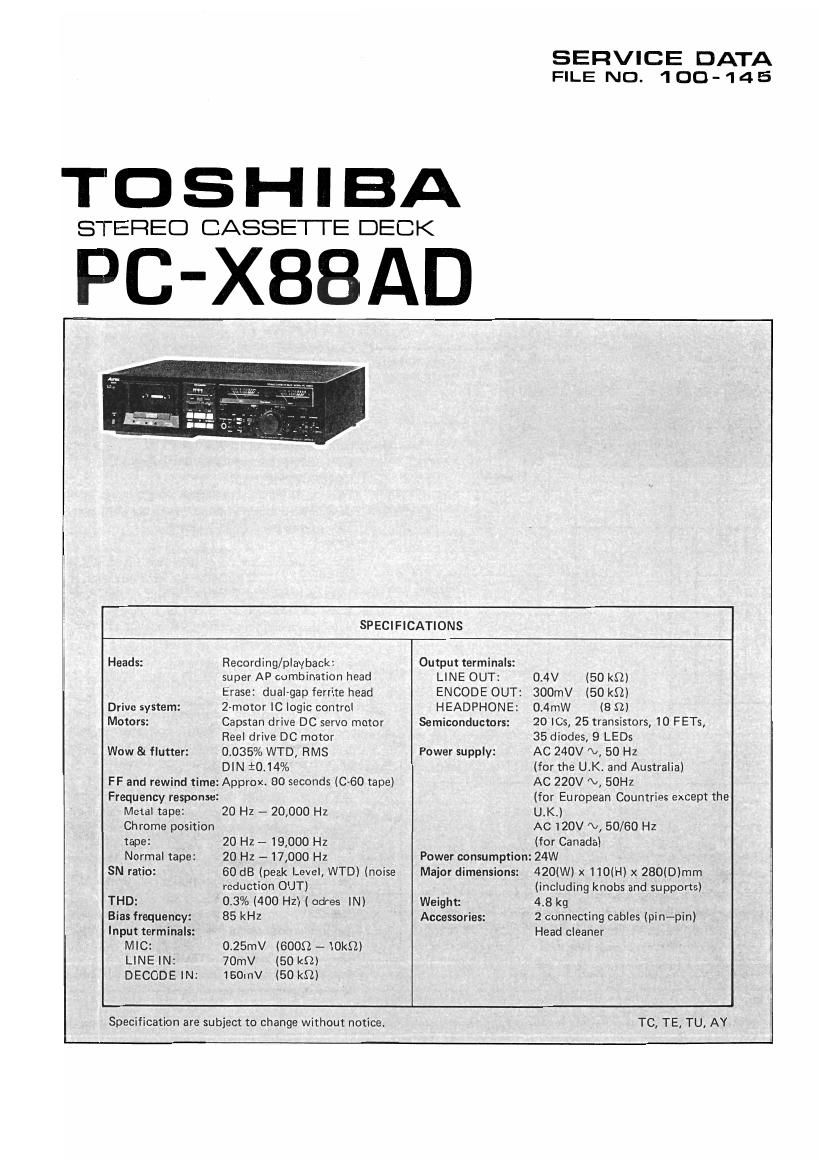Toshiba PC X88AD Service Manual
This is the 35 pages manual for Toshiba PC X88AD Service Manual.
Read or download the pdf for free. If you want to contribute, please upload pdfs to audioservicemanuals.wetransfer.com.
Page: 1 / 35
